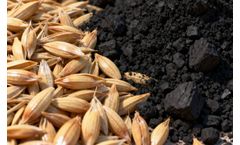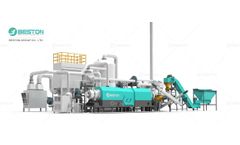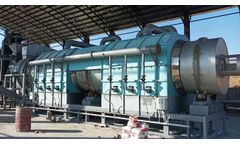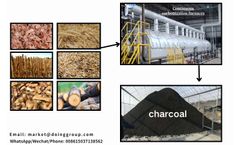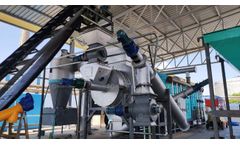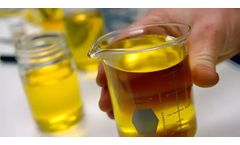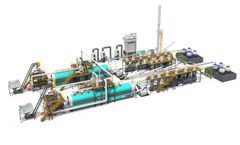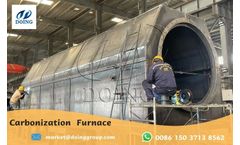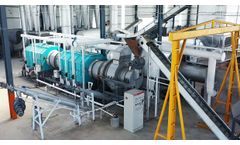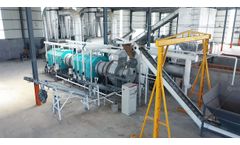Biomass Pyrolysis Articles & Analysis
118 articles found
Choosing carbonization machine specifically designed for biomass feedstocks ensures efficient and high-quality rice husk carbonization. ...
Among the emerging solutions, biochar production through biomass carbonization is gaining attention as both a waste management tool and a carbon sequestration strategy. While large-scale biomass pyrolysis plants often dominate headlines, they require substantial capital and long-term commitment. ...
Feedstock Preparation and Handling The foundation of reliable operation of biomass pyrolysis plant for sale lies in feedstock quality. Materials should be properly dried to reduce excessive moisture, which can destabilize reactor temperatures and lower carbonization efficiency. ...
Biochar production technologies have matured significantly, allowing for the controlled conversion of biomass into a carbon-rich material with wide-ranging applications. At the forefront of this evolution is the biomass pyrolysis plant for sale, an industrial solution engineered to convert agricultural residues, forestry waste, and other organic ...
Traditional methods often fail to meet the needs of large-scale continuous production of biochar, with low output, unstable quality, and huge impact on the environment. Continuous biomass pyrolysis machine DOING biochar carbonization reactor is designed for continuous operation and can quickly process large amounts of biomass. ...
In a biomass pyrolysis plant, feedstock such as wood chips, agricultural waste, forestry residues, or even municipal solid waste undergoes thermal decomposition at high temperatures (usually between 400°C and 800°C) inside a pyrolysis reactor. Biomass pyrolysis plants offer numerous environmental ...
Once prepared, the shells are loaded into a pyrolysis reactor, where they are heated to temperatures ranging from 400°C to 800°C. ...
Catalytic pyrolysis is a modified version of the traditional pyrolysis process. While traditional pyrolysis relies solely on heat to break down organic materials, catalytic pyrolysis introduces a catalyst into the reaction system. ...
Among the various biofuel production methods, biomass pyrolysis stands out for its significant environmental benefits. ...
Understanding the differences between biomass gasification and pyrolysis is crucial for determining the most suitable approach based on the type of biomass, the desired product, and the specific environmental or industrial objectives. ...
The process of pyrolysis has gained significant attention as a method for converting biomass into valuable byproducts like biochar, syngas, and bio-oil. ...
Pyrolysis is a thermal decomposition process that breaks down organic materials, such as plastic, rubber, and biomass, in the absence of oxygen. ...
The pyrolysis carbonization furnace controls the temperature, oxygen content and other conditions to make biomass waste undergo pyrolysis reaction in a high temperature and oxygen-deficient environment to produce combustible gas and charcoal. ...
Feeding the Biomass into the Reactor Once prepared, the biomass is fed into the pyrolysis reactor. ...
The biomass fraction of pyrolysis refers to the portion of biomass material that undergoes thermal decomposition in the pyrolysis process to produce valuable products such as biochar, bio-oil, and syngas. ...
In January 2014 BTG Bioliquids / Empyro BV started construction of its pyrolysis oil production facility in Hengelo, the Netherlands. The Empyro plant converts 5 tons per hour of wood residues into pyrolysis oil, process steam and electricity. Start-up of the installation commenced in early 2015 and production has gradually increased since. Nameplate capacity was reached in 2017 and since then ...
Technological Advancements Keeping abreast of technological advancements in charcoal production is vital. Innovations such as biomass gasification, pyrolysis technology, and advanced filtration systems can significantly improve the efficiency and environmental footprint of charcoal making. ...
Biomass pyrolysis stands at the forefront of innovative technologies aimed at mitigating environmental degradation. ...
Biomass pyrolysis is a thermochemical process that involves heating organic materials in the absence of oxygen to induce decomposition. ...
Biomass pyrolysis is a cutting-edge process that holds significant promise in the realm of renewable energy and sustainable resource management. ...

